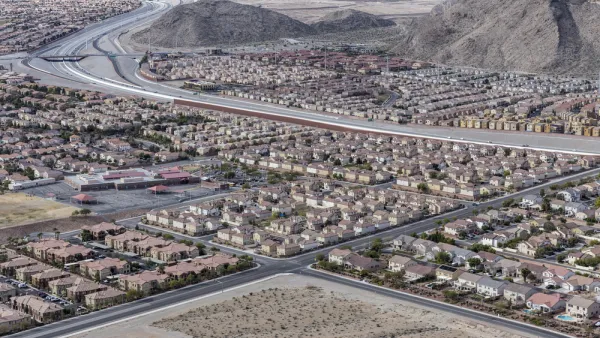Even cities with wealthy tax bases and strong economies face budget shortfalls when it comes to basic needs. Why?

Pointing to recent revelations about the city of Houston’s ailing finances, Charles Marohn of Strong Towns points out that many cities — including extremely wealthy ones like Santa Clara, California — struggle to afford basic infrastructure maintenance.
That’s because this isn’t a wealth problem, it’s a productivity problem. And like all productivity problems, growing faster buys time but ultimately makes the insolvency problem worse. If you lose money on every transaction, you don’t make it up in volume, even in California.
As Marohn explains, the underlying cause of the financial crisis facing many U.S. cities is the “aggressive outward expansion of cities,” which created a vast and unsustainable network of infrastructure that would need maintenance and repair. In California, where Proposition 13 keeps property taxes on existing homes low, cities encouraged outward development to expand their tax base in what Marohn calls a ‘Growth Ponzi Scheme.’
In Marohn’s view, “What we need is a more humble approach, one that starts by recognizing that cities are complex, adaptive systems with unpredictable feedback loops and untold novel responses to stress and opportunity. They are not mere mechanical devices, a collection of streets, buildings, pipes, zoning classifications, and financial products.” Marohn recommends five steps cities can take to make an impact on their local development and finances from the ground up, including building lots of housing, making streets safer, and converting unproductive parking lots to better uses.
FULL STORY: It’s Not Just Houston That’s Broke. So Are Silicon Valley Cities.

Analysis: Cybertruck Fatality Rate Far Exceeds That of Ford Pinto
The Tesla Cybertruck was recalled seven times last year.

National Parks Layoffs Will Cause Communities to Lose Billions
Thousands of essential park workers were laid off this week, just before the busy spring break season.

Retro-silient?: America’s First “Eco-burb,” The Woodlands Turns 50
A master-planned community north of Houston offers lessons on green infrastructure and resilient design, but falls short of its founder’s lofty affordability and walkability goals.

Test News Post 1
This is a summary

Analysis: Cybertruck Fatality Rate Far Exceeds That of Ford Pinto
The Tesla Cybertruck was recalled seven times last year.

Test News Headline 46
Test for the image on the front page.
Urban Design for Planners 1: Software Tools
This six-course series explores essential urban design concepts using open source software and equips planners with the tools they need to participate fully in the urban design process.
Planning for Universal Design
Learn the tools for implementing Universal Design in planning regulations.
EMC Planning Group, Inc.
Planetizen
Planetizen
Mpact (formerly Rail~Volution)
Great Falls Development Authority, Inc.
HUDs Office of Policy Development and Research
NYU Wagner Graduate School of Public Service




























